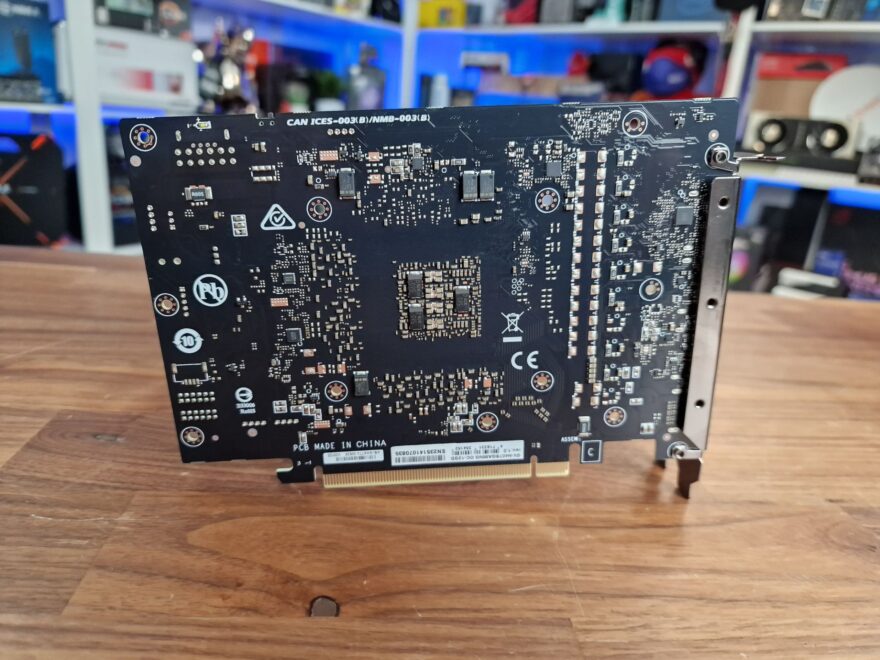Gigabyte RTX 4070 SUPER Gaming OC Graphics Card Review
Peter Donnell / 10 months ago
A Closer Look
As you might expect, the Windforce cooler is the one we know and love, and while the general length and width change, the design philosophy is very much what we expect from this iconic cooler.

What I have noticed though is that the 11-blade fans with their thinner thins aren’t present, instead using a wider fin design 9-blade design which should allows for a low of air pressure at lower RPM.

Gigabyte hasn’t changed the x3 configuration though, as the middle fan still spins the other ways to the outside fans, creating a big air vortex in the heatsink to improve heat dissipation, and all the fans are individually PWM controlled with ZeroRPM modes.

The card is a little bit thicker, pushing to a triple-slot design compared to most of the MSRP cards that were all pretty much dual-slot designs. This means there’s a much thicker heatsink in this card, and bigger fans, allowing the card to run a bigger overclock and to deliver more cooling performance at the same time.

There’s the usual 12VHPWR connector in the side of the card too, which I rather like as it’s one cable vs the 2 or even 3 8-pin connectors we saw on previous generations. There’s also a BIOS switch here, allowing you to switch between OC and Silent modes, which are also handy should something go wrong by flashing the BIOS as you can recover the GPU using the alternative bios.

There’s a huge backplate on here too, which will help protect the PCB, keep the card from sagging and provides additional cooling to the back of the card too.

Plus, there’s a massive cut-out to allow the rear most fan to push air through the card, which is exactly where the heatsink is the thickest and most dense, so this should help immensely with cooling performance.

Towards the back, you’ll find three DisplayPorts and a single HDMI port.

With the cooler stripped down, the PCB is pretty densely packed, and there’s clearly more going on with the VRM with more phases and chokes vs the Founders Edition card, nodding to the bigger overclock and the need for a more robust cooling solution.

There are 6 x 2GB VRAM ICs here, giving the card its 12GB total VRAM.

The back of the card is pretty neat and tidy, as Gigabyte use a fully automated process the ensures there are no sharp points on the solder.

The backplate is a single-piece construction that uses a screw-threw design to sandwich the PCB without putting stress on the board.

I love this heatsink, it’s absolutely packed with things, while also being a little thicker and wider than most in its class, giving it an increased surface area.

As you can see, there are thermal pads for all the memory ICs, including two for the empty slots, suggesting they use the same block on the 16GB Ti versions that are coming later this week. There are pads for all of the phases and VRM hardware too, so everything is directly cooled and fed into the copper plate and the 6 massive heat pipes.




















